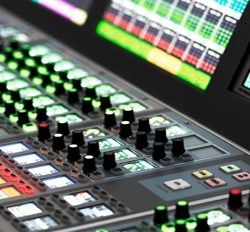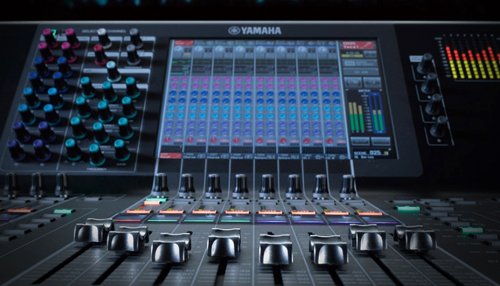Until just a few years ago, I never would have imagined that many of the current smaller format digital consoles would be able to take the place of the larger frame analog consoles that my shows and events required. (Well, still require.)
While the input count at many of these events, usually corporate/industrials, is generally minor, the routing requirements can be quite complex, and only larger analog boards offered the necessary bus count and matrix routing.
The initial digital consoles were usually larger and thus provided much of the same capability (and often more), today many smaller consoles are outfitted with the feature sets and routing capabilities to handle sophisticated, multi-faceted productions. Event planners love these consoles because they reduce the footprint at front of house, and my crew (and I) love the fact that we’re not moving bulky, heavy units.
In addition, digital really shines when it comes to live recording. It used to be that making even a simple 2-track board tape required a dedicated outboard recording device and patch cables, and multi-track recording was even a bigger deal. You either needed a split snake (preferably one with transformers to eliminate noise) or a ton of patch cables so to take direct outputs from the channels.
Now many digital mixers offer 2-track recording to USB, allowing the user to simply plug in a standard thumb drive. For multi-track recording, in some cases it’s as simple as plugging in a computer or hardware recording unit into the digital data stream and pressing the “record” button.
Suffice to say that there’s a lot lurking just under the surface with smaller digital consoles. I decided to take a look at the current crop to put a spotlight on some less-than-obvious capabilities.
Yamaha CL5
Measuring 11.75 x 41.5 x 26.25 inches, the CL5 is the largest frame size in the series and packs a lot of features. It offers the ability to mix 72 mono and 8 stereo channels, with up to 8 FX units available. Remote Rio stage boxes expand input and output connections, augmenting the 8 onboard inputs and outputs. Three Mini-YGDAI expansion card slots allow numerous option cards, including Lake processing, Dugan auto mixing, Waves SoundGrid, Aviom A-Net, CobraNet, Optocore, EtherSound, Riedel RockNet, and more.
One thing that really stands out is multi-track recording with the included Nuendo Live DAW application, which can be accessed and controlled via the touch screen. There’s also 2-track recording to USB. I also really like the gain compensation feature that works when more than one console is using an input source. It ensures that when the analog gain stage is adjusted from one of the consoles, corresponding compensation is automatically applied at the digital stage, so that the level sent from the I/O rack unit to the connected CL consoles remains constant.
Allen & Heath Qu-16
The recently introduced rack-mountable mixer occupies just 7.3 x 17.3 (19 with optional rack ears) x 18.5 inches and includes 16 mono inputs, 3 stereo inputs, 12 output mix buses and 4 stereo FX units. The surface may be compact but it offers 17 motorized faders, a color touch screen and user assignable keys. The mixer can be connected to the AR2412 and AR84 remote audio rack stage boxes using the built in dSNAKE port allowing remote placement of inputs and outputs via Cat-5.
The Qu-16 is also compatible with the company’s ME-1 personal mixing system. It’s amazing how easy it is to do multi-track recording with the console. It has a built-in interface that streams channels 1 through 16, the main L + R, and 3 selectable stereo pairs to a Mac computer.
If you don’t use a Mac, or simply don’t want to mess with interfacing the computer, it also has an integrated 18-channel multi-track USB recorder that offers 24-bit/48 kHz recording and playback to and from a USB hard drive.

















